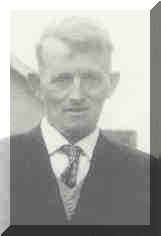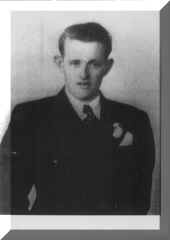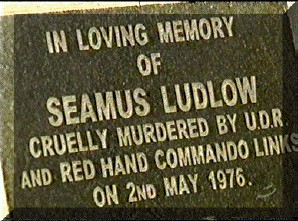The Murder of Seamus Ludlow in County Louth, May 1976. Towards a public inquiry?



The Murder of Seamus Ludlow in County Louth, May 1976. Towards a public inquiry?
|
|
Introduction to the murder of Seamus Ludlow and the official cover-up. Michael Cunningham investigation - 1978 The recent Campaign for Truth and Justice. Irish Victims Commission Report. Ludlow family's questions for the RUC (now the PSNI). Jim J. Kane's letter to the N I Human Rights Commission. Jim J. Kane's letter to the RUC Ludlow Family Letter to Bertie Ahern Other Ludlow Family Sites. |
The Sunday Tribune, 21 February 1999: Ludlow inquiry faces resistance Calls for Ludlow inquiry face official resistance from Justice department, writes Ed Moloney The Department of Justice is believed to be leading official resistance to calls for an independent public inquiry into the circumstances surrounding the killing of Dundalk man Seamus Ludlow, who was shot dead near his home in May 1976, according to informed sources. A campaign by his family has brought to the surface allegations of a cover-up involving both the British and Irish security authorities lasting more than two decades. Last week the human rights group British Irish Rights Watch boosted the campaign with the publication in Dublin of a report into the killing backing the family's demands for a public inquiry. The BIRW report listed 14 questions for the British and Irish authorities to answer, 10 of which deal with the way the gardai and other authorities in the Republic handled the case. Seamus Ludlow's family held a press conference in Dublin last Thursday, supported by five border TDs, and reported suspicions that the cover-up may have been motivated by the need to protect an agent, possibly the man who fired the gun. A copy of the BIRW report was given to the Taoiseach's office. A public meeting in Dundalk Town Hall held later attracted a crowd of several hundred and was attended by representatives of all the major local political parties. a petition supporting the call for an inquiry was also gathered. Members of the Garda Special Branch in Dundalk were outside the hall, apparently monitoring those at the meeting. A key allegation which is now becoming a central focus of the campaign revolves around the possibility that the authorities may have been protecting an agent among the killers of Seamus Ludlow. He was shot dead not long after he hitched a lift from Dundalk to his home late on a Saturday night. Family spokesman Jimmy Sharkey, a nephew of the dead man, said last week: "We are asking what was the reason for the cover-up. I think it is that one of the four people in the car that night was an agent or informer for British Military Intelligence, the RUC Special Branch or even Garda Special Branch. Everything points to the trigger man and if that is true it means he was allowed to continue on with his murderous ways." The family's demand for a public inquiry puts the Government in a difficult position. If the authorities reject the demand it may weaken their ability to take a morally vigorous line with the British government over exclusively Northern security scandals such as the Bloody Sunday inquiry and the Pat Finucane killing, both of which could have implications for the peace process. If, however, an inquiry is allowed, there is no knowing what other security scandals may emerge especially since the relevant events cover a period in the mid-1970s when allegations of dirty tricks abounded. The evidence suggesting that the Seamus Ludlow case was the subject of a cover-up is beginning to accumilate and despite media indifference it may become more difficult to ignore:
I Homepage I I Top I I Press Coverage |